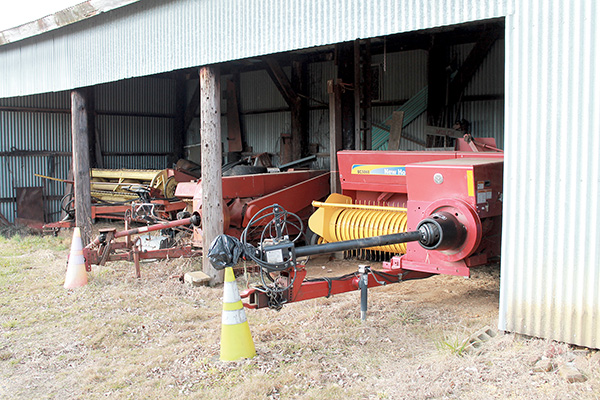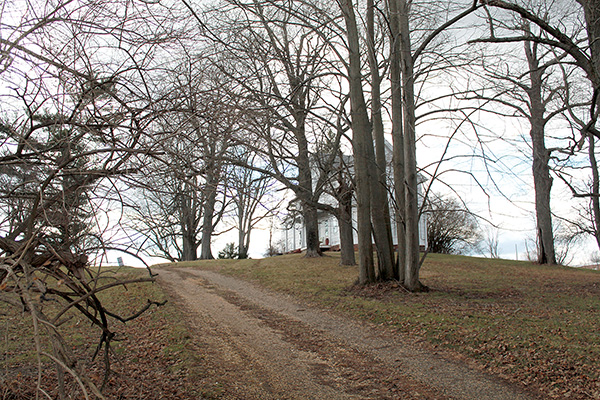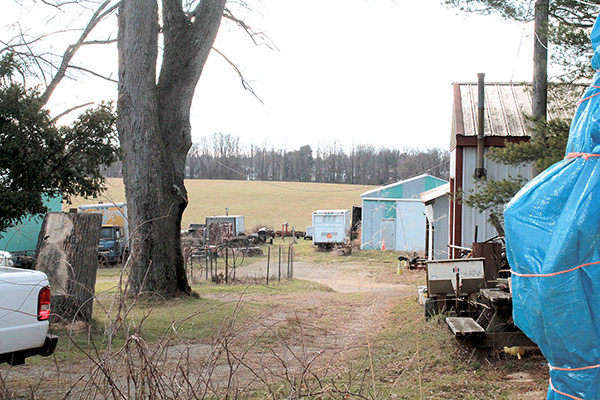
By Vita Duva
“When a drought’s coming, there is nothing you can do. Your hands are tied,” third-generation farmer Jim Maghan of Top of the Hill Farm in Marlboro told The Two River Times.
This summer’s persistent heat wave and worrisome drought was a first for the hay and straw grower, as his crops never produced a second cut.
“I used to get three cuttings, but I do get two, most normal years,” Maghan explained. “It started around, I think, towards the end of June, then we never got any rain until September. You know, it just sat there. Then we started getting something in September, but it was too late. It never had a chance to grow.”
According to the National Integrated Drought Information System (NIDIS), a multiagency partnership that coordinates drought monitoring, forecasting, planning and information at national, state and local levels, this past summer was among the 10 hottest on record for New Jersey.
“Some farmers out by Cream Ridge and that area – some of their soybeans were so bad that they didn’t even bother trying to harvest them. They wouldn’t. It was a waste of time,” Maghan explained. “That hurts. They put a lot of money in that ground, you know.”
In August, the New Jersey commissioner of Environmental Protection, Shawn M. LaTourette, issued a statewide drought watch – the first since 2016 – as Gov. Phil Murphy’s administration urged residents and businesses to conserve water in order to avoid worsening water supply conditions.
“Even if I had water, it wouldn’t justify watering it because diesel fuel went way up and I don’t have irrigation anyway,” the haymaker said.
Although Maghan hasn’t totaled up his production in years, on average, the farmer cultivates about a few thousand bales of orchard-grown grass per harvest which he sells to clients, mostly those with large farm animals.
“Most horses like it,” he said with a chuckling smile.”
“I also have 5 acres down there in front of where the old airport (in Marlboro) used to be, and I didn’t get one bale of hay. I don’t know what happened to it. This year it looks good, but it could have also been the seed,” Maghan said. “You have to be careful when you buy seed from somebody else – it could be two years old and you don’t know it until you start growing it.”
“At $14 dollars per bag, you hate to have bad seed. You got to plant it like three bushels to the acre, and that adds up. Then you got to put fertilizer on it. That doubled in price, too, because of the shortage and everything,” he said.
But luckily for Maghan, growing hay for profit is not his only means of survival; he was a truck mechanic for many years and is now a delivery truck driver.
“I don’t have enough acreage to make a living off a farm. There’s only 30 acres here, and that’s 29 that I actually farm,” he explained, noting urban development as another obstacle today’s farmers readily face. “This area – you can’t survive farming. You don’t have enough ground. They built it up, and they keep building it up. Nowadays, you need at least 2,000 acres to live off it, and even then, you might still have to do some other work on the side.”
Maghan noted that years ago, countrymen would even fight each other for ready-ground.
“In the old days, this place was 50 acres at one time. Where the (Frank Defino Central Elementary School) is, that was 20 acres that my father sold to the township (of Marlboro). But back then, you could make a living off of 50. But that was back in the ‘30s, ‘40s and early ‘50s,” the grower said of his family farm. “When my father was here, well, he’d come over here from Freehold when he was 9 years old. He farmed with horses back then. I don’t know if I could have done that. My little skinny butt – those horses would have probably killed me.”
Maghan’s father was mainly a potato farmer. According to Maghan, back then everybody grew potatoes. And anybody who farmed went to the Newark Market to sell their produce.
“I can remember going there once,” he recalled. “I was probably only about yay high, I guess it was sons’ night or something like that, so a lot of farmers would take their young sons into the market with them. Yeah, things have changed.”
And while things have changed, hay cultivation and production – a good-quality marriage of art and science – still stands the test of time. Of course that still means you need a little help from your friends, and in Maghan’s case, that’s his family. He credits his son, Jim Maghan and grandsons, Noah and Matthew for their help.
Another variable that can make or break a grower’s chances of successful hay production is the equipment needed in order to do so. In haymaking basics that means everything from cutting and mowing to tedding (curing mown hay), raking and bailing.
Maghan said every farmer needs a big tractor so they can cut the hay. Farmers then have to ted the hay with another piece of equipment and rake with another. Maghan has a double-rake hitch, which means that he can pull two rakes behind one tractor, saving him a lot of time out in the fields.
“Then the baler, that’s the main thing,” Maghan said, as he proceeded to tell a story about his late wife of 56 years, Jill Maghan. “When Jill was still alive, she said, ‘Why don’t you buy a new one?’ I almost fell off the chair. Because the day before, it broke, the old one. But I had the part to fix it.”
Maghan continued, “So yeah, I made a phone call. I never even went down to the dealership; the closest New Holland dealer was down there in Bridgeton. And that was $23,800 for a brand-new baler and that wasn’t the biggest one – I could have spent a little bit more, got a little bigger one. But for what I got, that was perfect and I’m still using it. 2017, that’s still like new.”
Maghan said every farmer should have two balers.
“If one breaks, and the clouds are coming in – they’re saying rain that night – you don’t have time to fix the baler. If it’s something simple, you can get her going, but if it’s something major, you’re done for. You’re gonna lose that acre of mulch,” he explained.
But when asked if there was anything else that people should know about farmers and their craft, he answered with prowess and a little laughter, “Yeah, tell them, give a farmer respect.”
Especially if they are on a tractor. “People will even pass you in a car while you’re on a hill. Most farm tractors, if I give it full throttle it will do 18 miles per hour, but I don’t go full throttle. I do around 15 miles per hour. They can’t even wait a couple more minutes?”
The article originally appeared in the January 12 – 18, 2023 print edition of The Two River Times.

















